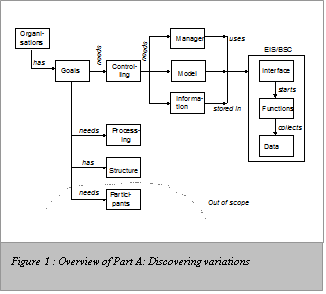
The user interface could be standard and static
Such knowledge-based systems that seek to adapt the interface should be concerned with variations in users, tasks, data and environment (Benyon, 1998). However, for some applications, the knowledge-based system could also contain static knowledge that is not subject to variations. If no variation exists among users (characteristics, intentions, goals), the interface could be standard, straightforward and static.
If there is no variation, no intelligence is needed
In other words, the necessity of some kind of intelligence that is able to detect variation is redundant since there is no variation and hence one conclusion (type of user interface) can be applied to all users. In addition, if all users speak the same language, there is no need to provide users with other languages.
The mission of my study
The mission of the research is to clarify whether artificial intelligence will have a beneficial effect on the design and use of executive interfaces. The strategy to accomplish this mission will be to discover and identify measurable variations in the domain of discourse that are particular to business intelligence solutions.
Discovering variations
Consequently, I focus not on common variations like age, education, visible disabilities and so on. Those variations are subject to all type of systems. I do not believe that those variations are unimportant for BI tools but others have already researched them in detail.

In the figure above, an overview of the domain of discourse is depicted, which shows the parts where I expect to discover useful variations.
Organizations have goals
To accomplish goals an organization needs controlling, processing, a structure and participants. To manage and control the organization, there should be someone in charge; the manager. Furthermore, a model of the system (the organization) and information about it are needed.
A data warehouse or BI application
Information is stored in a data warehouse or bi application, which consists of three layers: the interface, the functions and the data. Although they are the probably the most important requirement of every organization, participants are not investigated because they are of a different meta-level of the domain of discourse.
Management information does not depend on the participants
Participants are in fact concrete people (or organizations) that make part of the information supplied to the manager if such information is required. In addition, extensive research performed by Van Leeuwen, 1996 shows that the factors determining the management information demands of managers are not related to the participants of an organization.
The ten factors determining information demands
Van Leeuwen has identified the following factors determining the management information demands of managers:
- the processes and activities performed by the organization
- the type of organization
- the structure
- the level of decision making
- the mission, the strategies
- critical success factors
- the size of the organization
- the culture of the organization
- the style of management
- the role of information technology (for example OLAP)
Some of these factors are not shown in the above figure but are discussed later in this study.
My research suggests that participants have no influence on the type of information requested by managers. This will clarify that it is less conceivable that participants will have an influence on the design of interfaces of business intelligence systems.
Cultural variations are also not taken into account
Finally, the culture of the organization is not taken into account because it is too vague and intangible to be part of this feasibility study. Although it is part of the list of factors directing the information demands of managers, I focus only on measurable variations and those which are easy to identify.
No comments:
Post a Comment